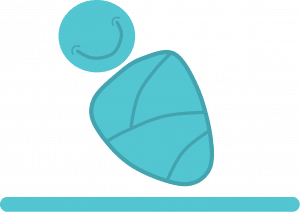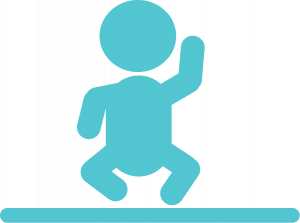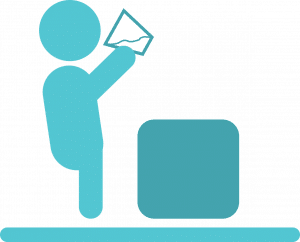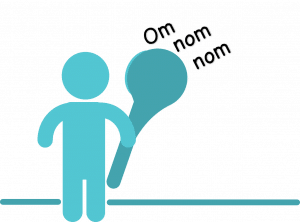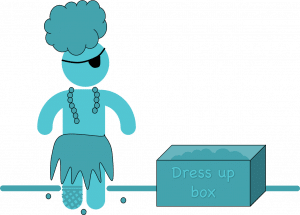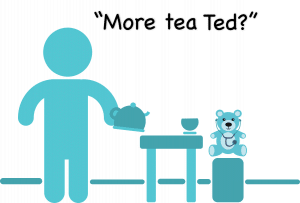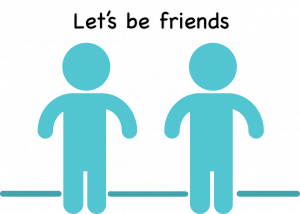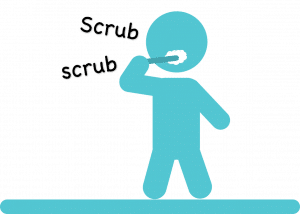Child development is the process by which the dependent infant matures into the independent adult, functioning within society. It is a complex interweaving of biology, psychology and environment where each skill builds on the ones that have come before and provides a foundation for those skills yet to develop.
Development in humans follows a predictable pattern and a rough schedule but no individual develops in exactly the same manner as any other. It follows an orderly pattern (unlike almost everything else regarding children); from top to bottom, central to outer and simple to complex. What is important, when considering normal development, is progress and parity; that children are moving forward in the different areas of development at roughly the same rate.
Disparity in progress between areas of the body (e.g. the right side and the left or the lower limbs and the upper limbs) or between domains of development (see below) is concerning, as is regression (i.e. loss of previously attained skills).
This article will outline the typical stages of development that children go through. The features typically seen at each age are described below.
Social, emotional and behavioural
Social development deals with the growth in relationships with others, within the construct of their culture and society. Socialisation is the process of learning the skills and attitudes peculiar to the community in which the child lives. The social world is incredibly complex and it is mind-boggling how quickly most infants start to pick up on the cues of those around them. They must develop an understanding of the actions, intentions and feelings of others in order to build and maintain healthy relationships with adults and children.
| Age | Feature |
| Newborn | Respond to being picked up
Enjoys feeding and cuddling |
| 6 weeks | Gazes at adult faces
Social smile
|
| 3 months | Smiles at familiar faces and at strangers |
| 6 months | Feeds self with fingers
Shows stranger fear |
| 9 months | Waves bye
Plays peek-a-boo Shows likes and dislikes
|
| 12 months | Drinks from a cup with 2 hands
Has separation anxiety
|
| 18 months | Uses a spoon
Plays contentedly alone, near a familiar adult Eager to be independent
|
| 24 months (2 years) | Displays frustration (temper tantrums)
Dresses self Begins to express feelings
|
| 30 months | Eats skilfully with spoon, may use a fork
May use the toilet independently Plays alone and alongside other children (parallel play) Enjoys pretend play
|
| 36 months (3 years) | Shows affection for younger siblings
Probably toilet-trained, though may still be wet at night Enjoys helping adults, imitating household tasks Has friends
|
| 48 months (4 years) | Eats skilfully with fork and spoon
Brushes own teeth Shows sensitivity to others Takes turns
|
| 60 months (5 years) | Very definite likes and dislikes
Shows sympathy and comforts friends Dresses without help, except laces Engages in co-operative and imaginative play, observing rules |
References
| (1) | Kapoor, Barnes, “Developmental Assessment”, Paediatrics, Edition 4, 2013 |
| (2) | Lissauer, W. Carroll, “Normal Child Development, Hearing and Vision”, Illustrated Textbook of Paediatrics, Edition 5, 2017 |
| (3) | Sheridan, M. D., From birth to five years; children’s developmental progress, 3rd edition revised and updated by A. Sharma and H. Cockerill, Routledge 2007 |
| (4) | understood.org |
| (5) | thecommunicationtrust.org.uk |
| (6) | Meggitt, C., Child development, an illustrated guide, 2nd edition, Heinemann 2006 |
| (7) | kidsmatter.edu.au |
Authors:
1st draft: Trainee doctor Hannah Murray
Senior review: Dr Louise Ingram (Paediatric specialist registrar)

